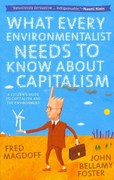can you summarize this and put it into an introduction paragraph ?
Decades of procrastination have transformed what could to be a more abrupt one. To have a fighting chance have been a smooth transition to a more carbon-neutral to reach the 2015 Paris Agreement's goal of limiting society into what will likely be a more challenging one. global warming (relative to the preindustrial age) to By the end of the decade, the global economy needs to well below 2"C, and preferably 1.5"C, and to achieve emit 25 percent less greenhouse gases than in 2022 to net carbon neutrality by 2050 requires immediate and have a fighting chance to reach the goals set in Paris ambitious action. By 2030, global emissions have to be in 2015 and avert catastrophic climate disruptions. reduced by at least 25 percent compared with today's Because the energy transition needed to accomplish emissions, which would require a combination of a this has to be rapid, it is bound to involve some costs sustained and large increase in greenhouse gas (GHG) in the next few years. While there is little consensus on emission taxes, regulations on emissions, and large the expected near-term macroeconomic consequences of investment in low-carbon technologies.' Advanced climate change policies, this chapter's central message economies cannot accomplish the needed reduction is that if the right measures are implemented immedia alone; large emitters in emerging markets also have to ately and phased in gradually over the next eight years, step up the pace of their emission reduction activities the costs will remain manageable and are dwarfed by (Parry, Black, and Roaf 2021). the innumerable long-term costs of inaction. Different Concerns about the energy transition's real assumptions regarding the speed at which electricity economic costs have been a key determinant of generation can transition toward low-carbon technologies decades-long procrastination on the policy front; while put these costs somewhere between 0.15 and 0.25 per- costs are often perceived as clear and present, benefits centage point of GDP growth and an additional 0.I to are seen as distant and uncertain, despite overwhelm- 0.4 percentage point of inflation a year with respect to ing evidence that any short-term costs will be dwarfed the baseline, if budget-neutral policies are assumed. To by the long-term benefits (with respect to output, avoid amplifying these costs, it is important that both financial stability, health) of arresting climate change climate and monetary policies be credible. Stop-and-go (October 2020 World Economic Outlook; IPCC 2022). policies and further procrastinating on the grounds that And hesitation in implementing the necessary climate "now is not the time" will only exacerbate the toll mitigation policies seems to have even grown recently against a backdrop of rising commodity prices fueling Introduction inflation (Morawiecki 2022) and worries about energy security (see Chapter 1). In some circles, concerns The scientific consensus recently summarized by have been raised that fighting climate change could the Intergovernmental Panel on Climate Change cause a global inflation shock (Morison 2021), exac- (IPCC 2022) suggests that to limit catastrophic erbating the output-inflation trade-offs central banks climate disruptions, large-scale policy changes need currently face and increasing risks to medium-term to take place rapidly. Decades of procrastination have price stability (Schnabel 2022), But are these con- transformed what could have been a slow transition cerns warranted? to a carbon-neutral society into what will now have "See Black and others (2022) and Chareau, Jaumotte, and The authors of this chapter are Mehdi Benariya Andaloussi, Schwerhoff (2022a) for an analysis of the equivalence between Benjamin Carton (co-lead), Christopher Evans, Florence Jaumotte, regulation on emissions and carbon taxes. Note that while incen- Dirk Muir, Jean-Marc Natal (co-lead), Augustus J. Panton, and tives for investment in green technology and renewables are an Simon Voigts, with support from Carlos Morales, Cynthia Nyakeri, important part of any climate package, they are best supplemented and Yiyuan Qi. They thank Jean Pisani-Ferry for helpful comments by carbon taxes or equivalent regulations that will help decrease on an earlier draft. demand for fossil fuels and achieve a faster transition







